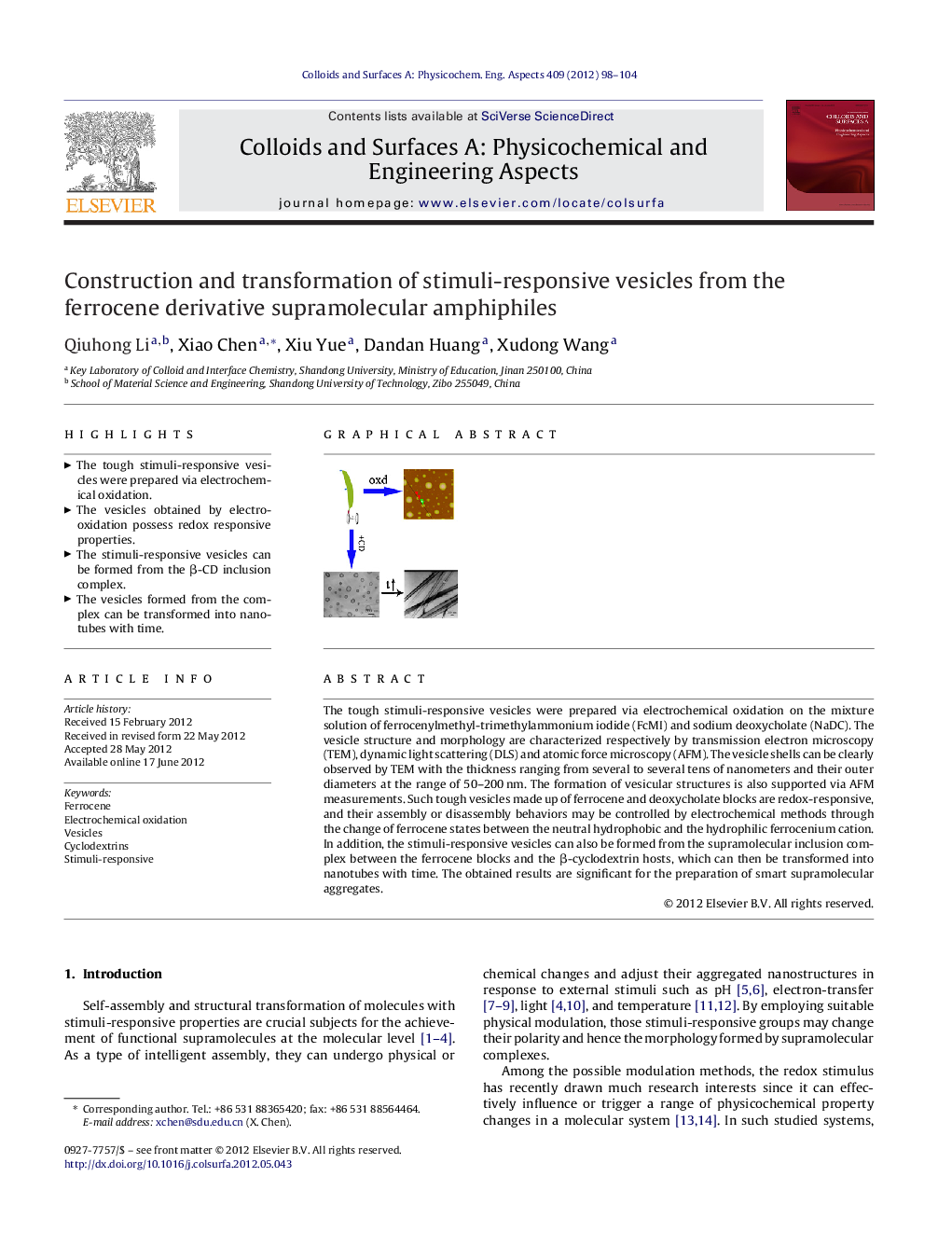| Article ID | Journal | Published Year | Pages | File Type |
|---|---|---|---|---|
| 594072 | Colloids and Surfaces A: Physicochemical and Engineering Aspects | 2012 | 7 Pages |
The tough stimuli-responsive vesicles were prepared via electrochemical oxidation on the mixture solution of ferrocenylmethyl-trimethylammonium iodide (FcMI) and sodium deoxycholate (NaDC). The vesicle structure and morphology are characterized respectively by transmission electron microscopy (TEM), dynamic light scattering (DLS) and atomic force microscopy (AFM). The vesicle shells can be clearly observed by TEM with the thickness ranging from several to several tens of nanometers and their outer diameters at the range of 50–200 nm. The formation of vesicular structures is also supported via AFM measurements. Such tough vesicles made up of ferrocene and deoxycholate blocks are redox-responsive, and their assembly or disassembly behaviors may be controlled by electrochemical methods through the change of ferrocene states between the neutral hydrophobic and the hydrophilic ferrocenium cation. In addition, the stimuli-responsive vesicles can also be formed from the supramolecular inclusion complex between the ferrocene blocks and the β-cyclodextrin hosts, which can then be transformed into nanotubes with time. The obtained results are significant for the preparation of smart supramolecular aggregates.
Graphical abstractFigure optionsDownload full-size imageDownload as PowerPoint slideHighlights► The tough stimuli-responsive vesicles were prepared via electrochemical oxidation. ► The vesicles obtained by electro-oxidation possess redox responsive properties. ► The stimuli-responsive vesicles can be formed from the β-CD inclusion complex. ► The vesicles formed from the complex can be transformed into nanotubes with time.
